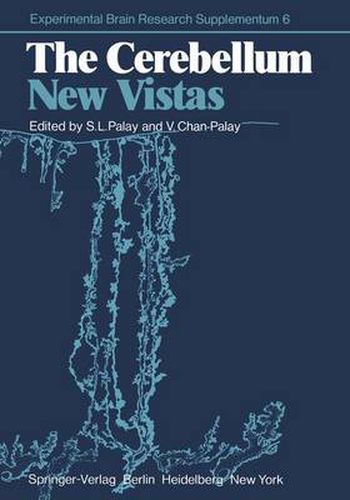Readings Newsletter
Become a Readings Member to make your shopping experience even easier.
Sign in or sign up for free!
You’re not far away from qualifying for FREE standard shipping within Australia
You’ve qualified for FREE standard shipping within Australia
The cart is loading…






This title is printed to order. This book may have been self-published. If so, we cannot guarantee the quality of the content. In the main most books will have gone through the editing process however some may not. We therefore suggest that you be aware of this before ordering this book. If in doubt check either the author or publisher’s details as we are unable to accept any returns unless they are faulty. Please contact us if you have any questions.
The present volume consists of papers prepared for a conference on the cerebellum which was held at the National Institutes of Health in Bethesda on 15 -17 May 1980. This was the first gen eral conference on the cerebellum since the 1972 symposium in Portland, Oregon, which was convened to celebrate the publica tion of the last volume of the Comparative Anatomy and Histolo gy of the Cerebellum by Larsell and Jansen. In organizing the 1980 Conference, we elected to emphasize ad vances in neuroanatomy over other aspects because, in our view, morphological investigation continues to playa large and essential role in the developing understanding of cerebellar func tion, and, despite the general impression that cerebellar anat omy is better known than any other part of the nervous system, our information on this topic is far from complete. N everthe less, the cerebellum offers the best model we have for analyzing the vertebrate central nervous system. The correlation of ana tomical, cytological, developmental, physiological, chemical, and pharmacological data on this relatively simple and uniform structure, which has persisted with remarkable conservatism through vertebrate evolution, still holds a rich store of answers to the most penetrating questions concerning the functional organization of the brain. Naturally, within the limits of time, space, and our resources we could not pretend to include every thing that has been learned about the cerebellum in the past decade.
$9.00 standard shipping within Australia
FREE standard shipping within Australia for orders over $100.00
Express & International shipping calculated at checkout
This title is printed to order. This book may have been self-published. If so, we cannot guarantee the quality of the content. In the main most books will have gone through the editing process however some may not. We therefore suggest that you be aware of this before ordering this book. If in doubt check either the author or publisher’s details as we are unable to accept any returns unless they are faulty. Please contact us if you have any questions.
The present volume consists of papers prepared for a conference on the cerebellum which was held at the National Institutes of Health in Bethesda on 15 -17 May 1980. This was the first gen eral conference on the cerebellum since the 1972 symposium in Portland, Oregon, which was convened to celebrate the publica tion of the last volume of the Comparative Anatomy and Histolo gy of the Cerebellum by Larsell and Jansen. In organizing the 1980 Conference, we elected to emphasize ad vances in neuroanatomy over other aspects because, in our view, morphological investigation continues to playa large and essential role in the developing understanding of cerebellar func tion, and, despite the general impression that cerebellar anat omy is better known than any other part of the nervous system, our information on this topic is far from complete. N everthe less, the cerebellum offers the best model we have for analyzing the vertebrate central nervous system. The correlation of ana tomical, cytological, developmental, physiological, chemical, and pharmacological data on this relatively simple and uniform structure, which has persisted with remarkable conservatism through vertebrate evolution, still holds a rich store of answers to the most penetrating questions concerning the functional organization of the brain. Naturally, within the limits of time, space, and our resources we could not pretend to include every thing that has been learned about the cerebellum in the past decade.